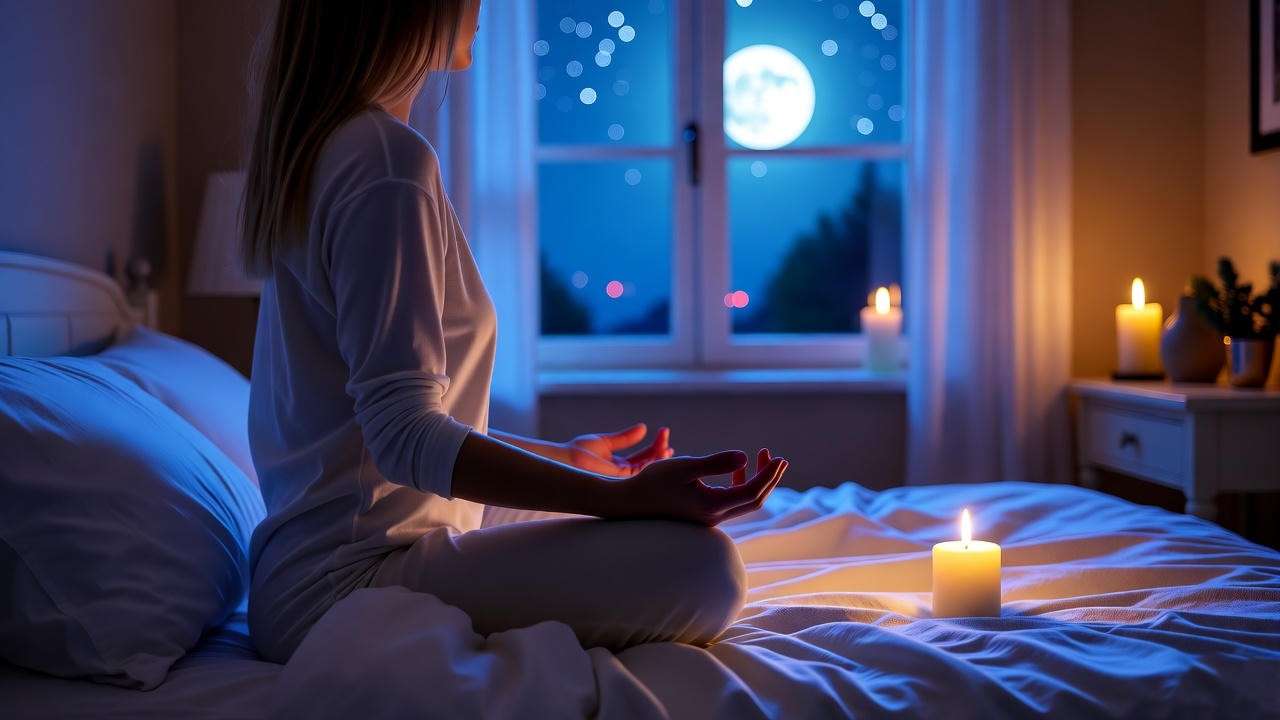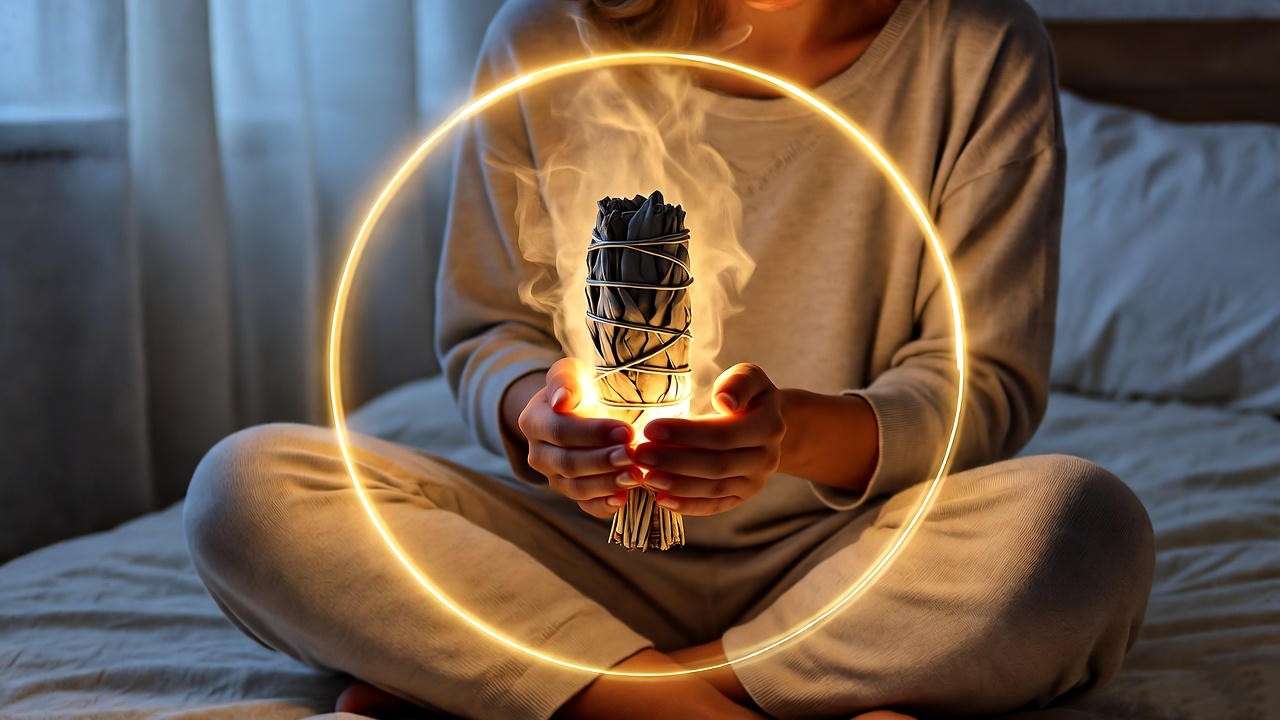Imagine waking up in the dead of night, heart pounding, drenched in sweat, with the vivid image of a shadowy demon lingering in your mind. These unsettling dreams about demons can leave you feeling shaken, questioning their meaning, and dreading the next night’s sleep. If you’ve ever experienced demons in a dream, you’re not alone—these haunting visions are more common than you might think. Whether they stem from stress, spiritual beliefs, or subconscious fears, demonic dreams can disrupt your sleep and well-being. But what do they mean, and how can you overcome the fear they provoke?
As a dream analyst with over a decade of experience in sleep psychology and holistic well-being, I’ve helped countless individuals decode their nightmares and reclaim restful sleep. In this comprehensive guide, we’ll explore the psychological and spiritual meanings of demons in dreams, uncover their common triggers, and provide expert-backed strategies to banish nighttime fears. Drawing on insights from Jungian psychology, sleep research, and spiritual traditions, this article will empower you to understand your dreams and sleep peacefully again.
What Does It Mean to Dream About Demons?
Common Themes in Demonic Dreams
Dreams featuring demons often feel vivid and terrifying, setting them apart from typical nightmares. Common motifs include shadowy figures lurking in the darkness, feelings of possession, being chased, or encountering supernatural entities with malevolent intent. For example, Sarah, a 32-year-old teacher, described a recurring dream where a dark, horned figure stood at the foot of her bed, leaving her paralyzed with fear upon waking. These dreams tend to evoke intense emotions like dread, helplessness, or panic, which can linger into the day.
Unlike regular nightmares, demonic dreams often carry a sense of otherworldliness, making them feel deeply personal or even spiritual. Understanding these themes is the first step to decoding their significance and addressing their impact on your sleep.
Psychological Interpretations
From a psychological perspective, demons in dreams often symbolize the “shadow self,” a concept introduced by Carl Jung. The shadow represents repressed emotions, fears, or desires that we push into the subconscious. A demonic figure might embody unresolved anger, guilt, or anxiety manifesting during REM sleep, when the brain processes emotions. For instance, someone grappling with workplace stress might dream of a menacing demon chasing them, reflecting feelings of being overwhelmed.
Research published in the Journal of Sleep Research (2020) suggests that nightmares, including those with demonic imagery, are often linked to heightened stress or anxiety disorders. Dr. Emily Watson, a sleep psychologist, explains, “Demons in dreams can be the mind’s way of externalizing internal conflict, giving form to fears we haven’t fully confronted.” By recognizing these dreams as symbolic, you can begin to address their root causes.
Spiritual and Cultural Perspectives
The meaning of demonic dreams varies across cultures and spiritual traditions. In Christian theology, demons may be interpreted as symbols of spiritual warfare or temptation, often prompting prayer or protective rituals. In contrast, Indigenous traditions might view such figures as trickster spirits testing one’s resolve, while Buddhist teachings could interpret them as manifestations of inner fear or ego to be confronted through mindfulness.
For example, in Hindu dream interpretation, a demonic figure might represent negative energies or unresolved karma, urging the dreamer to seek balance. These diverse perspectives highlight the importance of cultural context in understanding your dreams. As spiritual teacher Ananda Mitra notes, “Demons in dreams are often mirrors of our inner struggles, inviting us to face them with courage and clarity.”
Why Do We Dream of Demons? Common Triggers
Stress and Anxiety
High stress levels are a leading cause of vivid nightmares, including those featuring demons. When cortisol levels rise due to chronic stress, the brain’s amygdala becomes hyperactive during REM sleep, producing intense, fear-based dreams. A 2019 study in Sleep Medicine Reviews found that individuals with anxiety disorders are 30% more likely to experience recurring nightmares. For instance, dreaming of a demon chasing you might reflect the pressure of a looming deadline or personal conflict.
Trauma and Subconscious Processing
Unresolved trauma often surfaces in dreams as threatening imagery. Demons might symbolize past experiences of abuse, loss, or betrayal that the subconscious is attempting to process. According to the American Psychological Association (2021), trauma-related nightmares are common in individuals with PTSD, with demonic figures often representing feelings of powerlessness. Therapy, such as trauma-focused cognitive behavioral therapy (CBT), can help address these underlying issues and reduce nightmare frequency.
Spiritual or Religious Influences
Your spiritual or religious background can heavily influence dream content. For example, someone raised in a faith that emphasizes spiritual warfare might interpret a demonic dream as a literal attack, while a secular individual might see it as a metaphor for stress. Religious texts, sermons, or even family beliefs can shape how the subconscious constructs these images. A spiritual counselor I spoke with emphasized that such dreams often prompt introspection or renewed faith practices.
External Stimuli
External factors, like watching a horror movie before bed, can trigger demonic dreams. The brain incorporates recent stimuli into dreams, so a scary film or book might manifest as a menacing figure. Similarly, poor bedtime habits—like late-night screen time or caffeine—can disrupt sleep architecture, increasing the likelihood of vivid nightmares. For example, John, a 28-year-old graphic designer, noticed his demonic dreams spiked after binge-watching a supernatural thriller series.
Are Demons in Dreams Dangerous?
The Impact on Sleep and Mental Health
Recurring demonic dreams can disrupt sleep cycles, leading to fragmented rest, insomnia, or daytime fatigue. A 2022 study in Nature and Science of Sleep found that frequent nightmares correlate with a 25% increase in daytime anxiety and reduced cognitive performance. Over time, poor sleep quality can exacerbate mental health issues, creating a vicious cycle of fear and exhaustion.
Spiritual Concerns
For those with spiritual beliefs, demonic dreams may raise fears of supernatural harm. However, most spiritual leaders and psychologists agree that dreams are symbolic, not literal. Reverend Maria Gonzalez, a spiritual advisor, explains, “While demonic dreams can feel alarming, they’re often the mind’s way of processing fear or doubt, not evidence of an external entity.” Secular perspectives reinforce this, emphasizing that dreams reflect internal states rather than external realities.
When to Seek Help
If demonic dreams occur frequently, cause significant distress, or interfere with daily life, it may be time to seek professional help. Red flags include waking up in panic multiple times a week or avoiding sleep due to fear. A sleep specialist, therapist, or spiritual counselor can provide tailored support. Below is a quick guide to assess when to seek help:
Tip Box: Signs You Should Seek Professional Help for Nightmares
- Nightmares occur more than twice a week.
- You experience intense fear or anxiety upon waking.
- Sleep avoidance leads to chronic fatigue.
- Dreams disrupt your ability to function during the day.
How to Overcome Fearful Demonic Dreams
Pre-Sleep Strategies for Calmer Nights

A calming bedtime routine can significantly reduce nightmare frequency. Try these expert-recommended steps:
- Limit Screen Time: Avoid horror movies or stimulating content 2 hours before bed.
- Practice Mindfulness: Spend 5 minutes on deep breathing or guided meditation.
- Create a Ritual: Sip chamomile tea or read a soothing book to signal relaxation.
Here’s a simple 5-minute pre-sleep mindfulness practice:
- Sit comfortably and close your eyes.
- Inhale deeply for 4 seconds, hold for 4, and exhale for 6.
- Visualize a peaceful place, like a beach or forest.
- Repeat a calming affirmation, such as “I am safe and at peace.”
Dream Rehearsal and Lucid Dreaming Techniques
Imagery Rehearsal Therapy (IRT) is a proven technique for rewriting nightmare scripts. In IRT, you visualize a positive outcome for your dream while awake, retraining your brain to respond differently. A 2020 study in Sleep found that IRT reduced nightmare frequency by 60% in participants. To try IRT:
- Write down your demonic dream in detail.
- Change the ending to something empowering (e.g., the demon dissolves into light).
- Rehearse the new scenario daily for 10 minutes.
Lucid dreaming, where you gain control within a dream, is another powerful tool. To practice:
- Keep a dream journal to improve dream recall.
- Perform reality checks during the day (e.g., pinching yourself to confirm you’re awake).
- Before bed, affirm, “I will recognize when I’m dreaming and take control.”
Spiritual Practices for Protection

For those with spiritual beliefs, protective rituals can provide comfort. Examples include:
- Prayer: Recite a bedtime prayer, such as Psalm 23 or a personal affirmation.
- Smudging: Burn sage or palo santo to cleanse your space (ensure proper ventilation).
- Visualization: Imagine a protective light surrounding you before sleep.
Ananda Mitra suggests, “Visualize a golden shield around your body as you drift off, affirming that only peace can enter your dreams.” These practices can foster a sense of safety and reduce fear.
Addressing Underlying Causes

Tackling the root causes of demonic dreams is essential for long-term relief. Try these strategies:
- Journaling: Reflect on stressors or emotions that might fuel your dreams. Use prompts like, “What fear might this demon represent?”
- Therapy: Cognitive behavioral therapy (CBT) or trauma-focused therapy can address anxiety or past trauma.
- Stress Management: Incorporate yoga, meditation, or exercise into your routine to lower cortisol levels.
Downloadable Resource: 5 Journal Prompts to Uncover Your Dream’s Meaning (link to a free PDF on the website).
Practical Tips for Better Sleep After Demonic Dreams
Creating a Sleep-Friendly Environment
A restful bedroom environment can minimize nightmares and promote deep, restorative sleep. Here are expert-backed tips to optimize your sleep space:
- Dim Lighting: Use soft, warm lighting or blackout curtains to signal bedtime to your brain. Research from the National Sleep Foundation (2023) shows that exposure to blue light before bed can increase nightmare frequency by disrupting melatonin production.
- Comfortable Bedding: Invest in a supportive mattress and breathable linens to enhance physical comfort.
- White Noise: A white noise machine or fan can drown out disruptive sounds, creating a calming atmosphere.
- Temperature Control: Keep your bedroom cool (around 60–67°F) to align with the body’s natural sleep preferences.
For example, Lisa, a 40-year-old nurse, transformed her bedroom into a “sleep sanctuary” by adding blackout curtains and a white noise machine, reporting fewer demonic dreams within weeks.
Coping with Post-Dream Anxiety
Waking up from a demonic dream can leave you rattled, but these immediate calming techniques can help:
- Deep Breathing: Try the 4-7-8 technique: inhale for 4 seconds, hold for 7, exhale for 8. This activates the parasympathetic nervous system, reducing panic.
- Grounding Exercise: Name five things you can see, four you can touch, three you can hear, two you can smell, and one you can taste to anchor yourself in the present.
- Soothing Mantra: Repeat a calming phrase like, “I am safe, and this was just a dream.”
Quick Guide: 3 Steps to Calm Yourself After a Nightmare
- Sit up and take 10 slow, deep breaths.
- Engage your senses with a grounding exercise.
- Sip water or hold a comforting object (e.g., a soft blanket) to feel secure.
Building Long-Term Resilience
Long-term strategies can reduce the frequency and intensity of demonic dreams while improving overall sleep quality:
- Regular Exercise: Engage in 30 minutes of moderate exercise (e.g., walking or yoga) most days to lower stress hormones. A 2021 study in Sleep Medicine found that regular physical activity reduces nightmare frequency by 20%.
- Balanced Diet: Avoid heavy meals, caffeine, or alcohol close to bedtime, as they can disrupt REM sleep and trigger vivid dreams.
- Mindfulness Practice: Incorporate daily meditation or mindfulness to manage stress. Apps like Headspace or Calm offer guided sessions tailored for sleep.
- Therapy: If nightmares persist, consider working with a therapist trained in CBT or Eye Movement Desensitization and Reprocessing (EMDR) to address underlying anxiety or trauma.
By adopting these habits, you can build resilience against nightmares and foster a sense of calm that carries into your dreams.
Expert Insights and Real-Life Stories
What Experts Say About Demonic Dreams
Experts in psychology and spirituality offer valuable perspectives on demonic dreams. Dr. Michael Carter, a clinical psychologist specializing in sleep disorders, explains, “Demonic imagery often reflects the brain’s attempt to process intense emotions like fear or guilt. By addressing these emotions consciously, we can reduce their power in dreams.” Similarly, spiritual teacher Ananda Mitra emphasizes, “In many traditions, demons symbolize inner obstacles. Facing them in dreams can be a call to grow spiritually and emotionally.”
These insights underscore that demonic dreams, while frightening, are opportunities for self-discovery and healing when approached with the right tools.
Real-Life Experiences

Real-life stories highlight the diverse ways people overcome demonic reciente. Take Maria, a 35-year-old writer, who experienced recurring dreams of a shadowy demon after a stressful job transition. Through Imagery Rehearsal Therapy, she rewrote her dream to include a protective light, reducing her nightmares within a month. Conversely, Ahmed, a 29-year-old engineer with a Muslim background, found comfort in reciting Ayat al-Kursi (a protective Quranic verse) before bed, which helped him feel spiritually grounded and sleep peacefully.
These stories show that whether through psychological techniques or spiritual practices, individuals can find personalized solutions to conquer their fears.
FAQs About Demons in Dreams
Q1: Are demonic dreams a sign of spiritual attack?
A: While some spiritual traditions interpret demonic dreams as signs of external influence, most psychologists view them as symbolic representations of stress, fear, or unresolved emotions. If you’re concerned, consider combining spiritual practices (e.g., prayer or meditation) with psychological strategies like journaling to address both perspectives.
Q2: Can demonic dreams cause real harm?
A: Dreams themselves are not physically harmful, but frequent nightmares can lead to sleep deprivation, anxiety, or fatigue, impacting mental health. Addressing their causes—such as stress or trauma—can mitigate these effects and improve well-being.
Q3: How can I stop dreaming about demons?
A: To reduce demonic dreams, try Imagery Rehearsal Therapy, establish a calming bedtime routine, and manage stress through mindfulness or therapy. Spiritual practices like prayer or visualization can also provide comfort and reduce fear.
Q4: Are demonic dreams linked to sleep paralysis?
A: Yes, demonic dreams are often associated with sleep paralysis, a state where you’re temporarily unable to move while falling asleep or waking up. The Journal of Sleep Research (2018) notes that sleep paralysis can produce vivid, fear-based hallucinations, including demonic figures, due to heightened brain activity during REM sleep.
Conclusion
Demons in dreams can be unsettling, but they’re often the mind’s way of signaling stress, unresolved emotions, or spiritual questions. By understanding their psychological and cultural meanings, identifying triggers like anxiety or trauma, and adopting practical strategies like Imagery Rehearsal Therapy, mindfulness, or spiritual rituals, you can overcome nighttime fears and reclaim restful sleep. Start by trying one or two techniques from this guide—perhaps a calming bedtime routine or journaling about your dreams—and share your progress in the comments below.
Your dreams don’t have to control you. With the right tools, you can transform fear into empowerment, waking up refreshed and ready to face the day. For more insights, explore our related articles on dream interpretation or meditation for better sleep, and take the first step toward peaceful nights.













